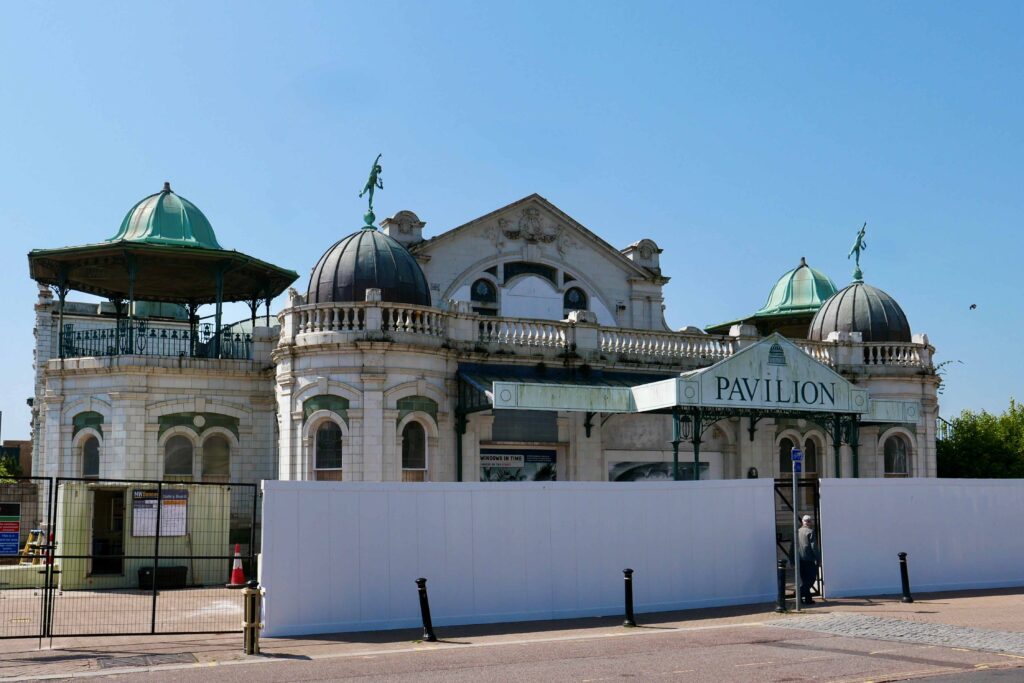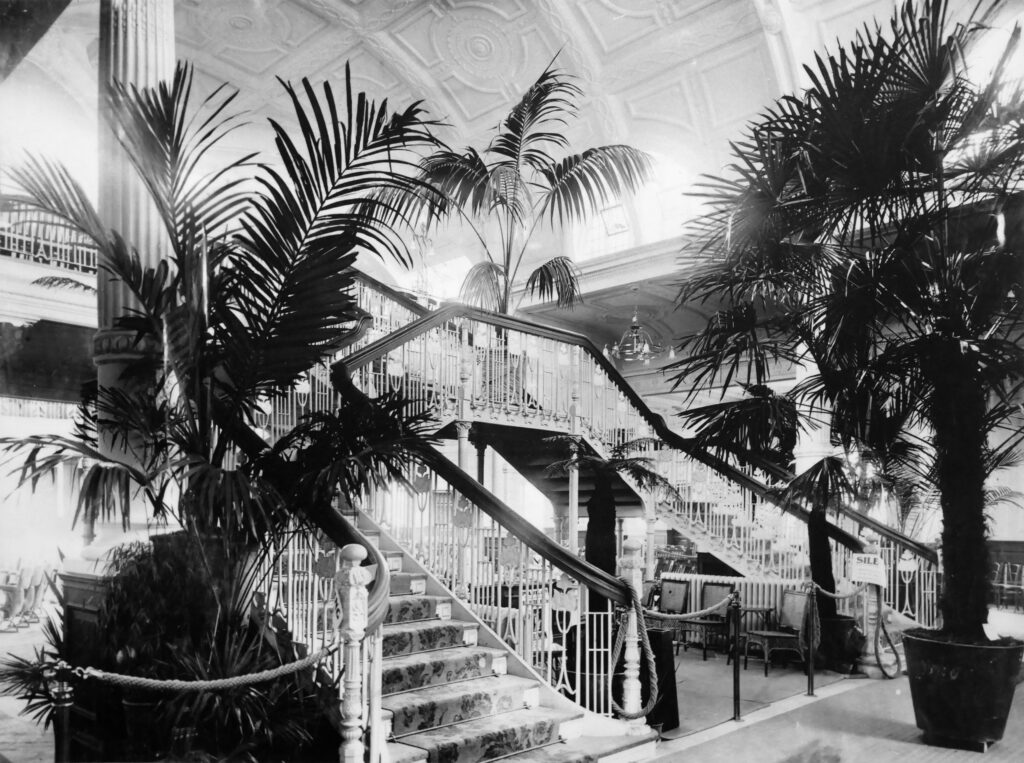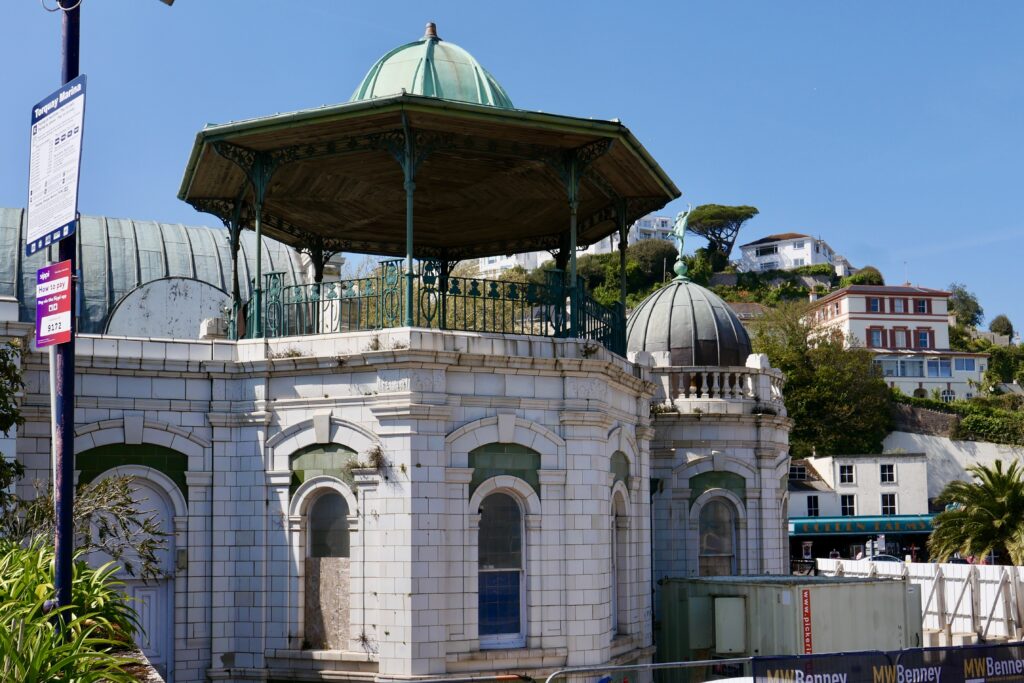
Torquay Pavilion Photograph: Morgan Ellis Leigh
Torquay Pavilion, Torquay, Devon. Grade II, Architect: Edward Richards, 1911 & H.A. Garrett
The exquisite Edwardian, art nouveau building that was once the centre of Torquay’s cultural life has been included on this year’s Top Ten Endangered Buildings List by the Victorian Society.
Griff Rhys Jones OBE, Victorian Society President said: ‘This is nothing short of a national treasure. We will never see its like again. Fantastical and charming and the delightful heart of Torquay itself. It’s good news that the former owners have abandoned their inappropriate plans and it is back in the hands of the council. Now funding and general local support is essential. Twenty-five years ago, I helped raise £25m for the Hackney Empire – another people’s palace dating from that era. It can be done. Come on Torquay. Get behind your jewel box of a venue.’
The Grade II listed pavilion was a favourite of Agatha Christie née Miller, who was born in Torquay in 1890 – who attended a Wagner concert there in 1914 the day she received a marriage proposal from Archie Christie. Originally a concert hall then a theatre, a skating rink and then a 1980s shopping arcade, the pavilion’s fate has mirrored the fashions and fate of the UK holiday trade. The venue played host to many famous names from Anna Pavlova, Rachmaninoff, Paul Robeson, Dame Nellie Melba, Sir Donald Wolfit, George Formby, Laurence Olivier, Dame Shirley Bassey and Harold Pinter, who wrote The Caretaker whilst playing the theatre. Speakers included Lady Randolph Churchill, politician David Lloyd George, aviator Alan Cobham and polar explorer Roald Amundsen.

Interior of the Torquay Pavilion. Historic photo courtesy and copyright Torquay Museum.
Built at a time when Torquay claimed to be the “richest town in Britain” the Pavilion is described in the official listing as “exuberant” and is a unique art nouveau Edwardian building. Traditionally, pavilions were located at the end of piers in seaside towns, but Torquay’s is unusual as it was built on land reclaimed from the sea. It is now in the heart of the Torquay Harbour Conservation Area facing gardens on two sides with the harbour on the other two sides. One of only seven buildings in the country to be clad with Doulton Carrara marble tiles in gleaming cream and green glazed finish. The entrance is flanked by turrets with pointed copper domes topped with statues of Mercury with a crowning statue of Britannia on the nave dome. The Pavilion is claimed to be the first building in the South West to be constructed with a steel frame, reflecting Victorian and Edwardian engineering skills.

Exterior of the Torquay Pavilion. Historic photo courtesy and copyright Torquay Museum.
Despite its early success, the Pavilion’s fortunes waned after its orchestra disbanded in 1953. Its final stage performance was in 1976. Though it was saved from demolition and briefly revived as an ice rink (1979–83), and later restored as a shopping mall (reopened 1987), its decline resumed. In 2013, Marina Developments Ltd., leasing the Pavilion from Torbay Council, announced its closure and proposed redeveloping it into a hotel-spa complex. However, plans including an 11-storey apartment block were deemed inappropriate and ultimately blocked after a successful legal challenge by local campaigners in 2018.
Meanwhile the steel girders which form its innovative framework have become heavily corroded from salt exposure. The current building shows evidence of water ingress, saturation, cracks, open joints and significant corrosion. Internally there is damage to plasterwork, fabric has been removed and there are signs of corrosion.

Exterior of the Torquay Pavilion 2025. Photograph: Morgan Ellis Leah
In October 2024, Torbay Council regained full control of the Pavilion after six years of limbo. Contractors are expected to begin investigative works in 2025 to inform urgent repairs. While funding from the lease surrender and Town Deal board offers a foundation, there remains a multi-million-pound shortfall for a full restoration.
Campaigners are yet to see a restoration timetable or phased schedule of works and, despite the transferal of ownership, basic protections like the covering of all windows from the exterior remain unactioned. Thus, the building remains at critical risk. Restoration will require a serious injection of funds – likely combining public money with a dedicated fundraising campaign. Without immediate action, this rare and treasured piece of Torquay’s cultural and architectural history faces irreversible loss.
James Hughes, Director, The Victorian Society said: ‘The Pavilion is a highly significant piece of British seaside heritage – bold, beautiful, and now precariously at risk. Torquay must seize this perhaps final chance to save its crown jewel.’
The full Top Ten Endangered Buildings list 2025 of Victorian and Edwardian buildings, and the archive of our previous Top Ten lists can be viewed here.